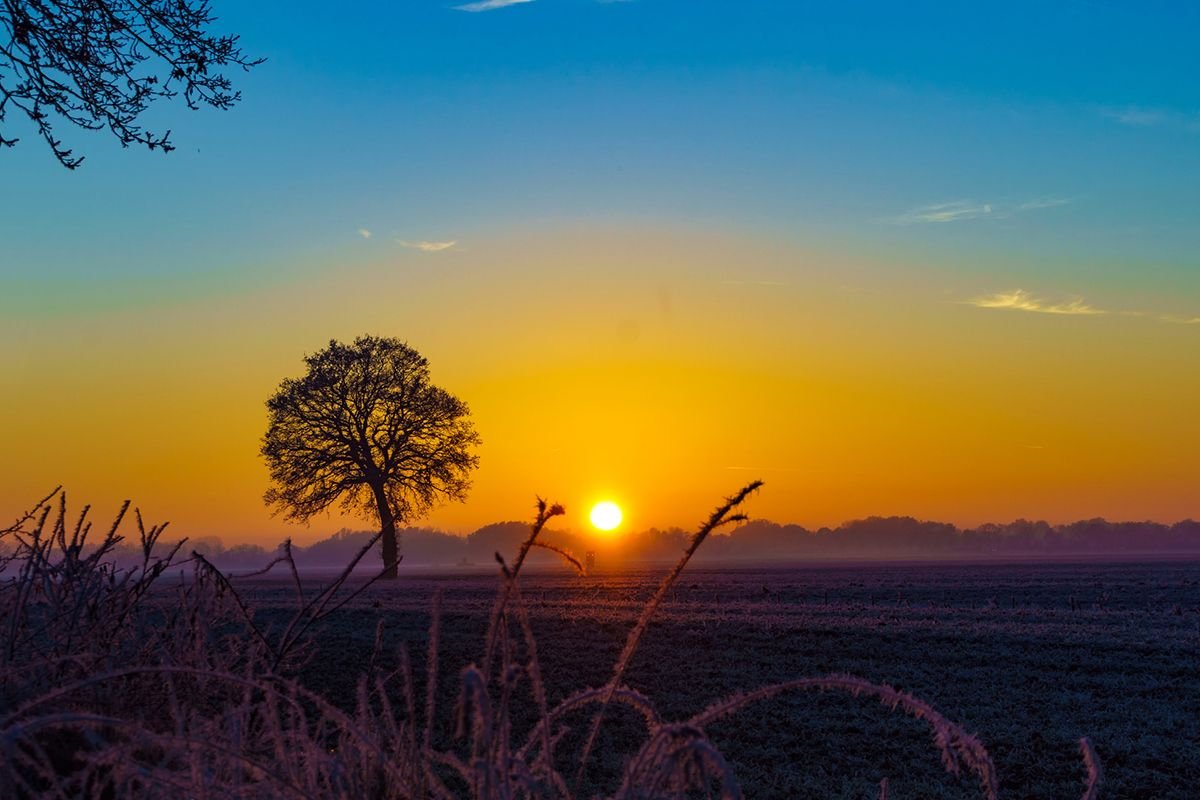Today's Google Doodle celebrates the winter solstice in the Northern Hemisphere which, technically, is the precise moment that the Earth's North Pole is tilted furthest away from the Sun. This year, it is set to take place at 22:23 Universal Time, 17:22 EST, or 14:22 PT on Friday, December 21.
Read more: When is December's full cold moon, and what does it mean?
The December solstice marks the shortest day of the year in the Northern Hemisphere—i.e. the one with the fewest daylight hours and the longest night—when the Sun will be at its lowest position in the sky, appearing directly above the Tropic of Capricorn. Conversely, in the Southern Hemisphere, the December solstice marks the longest day of the year.
The reason behind this phenomenon is that the Earth is tilted on its axis by 23.5° relative to the plane of the planet's orbit. This means that the northern hemisphere is tilted toward the Sun for half the year and away from it for the other half, thus being exposed to different levels of radiation from the star. This explains why we have seasons.
When the Northern Hemisphere is tilted away from the Sun, it experiences winter and, because the Sun's radiation is striking the Earth at a shallow angle, temperatures are colder. When it is tilted towards the Sun, the radiation hits the hemisphere more directly, which is why summers are hotter. (This effect is much more pronounced as you move away from the equator, where, for all intents and purposes, there is no summer or winter.)
In astrological terms, the December solstice marks the end of autumn in the northern hemisphere and the start of winter—which will last until March 20, 2019. It is one of the four days when a new season starts, alongside the spring equinox, the summer solstice and the fall equinox.
However, in meteorological terms, winter in the Northern Hemisphere begins on December 1 and ends on February 28. This is because the meteorological definition is based on the fact that the three calendar months of December, January and February have the lowest average temperatures.
Usually, the December solstice occurs on the 21 or 22 but occasionally it can fall on the 20 or 23, albeit rarely. In fact, the last solstice to take place on December 23 was in 1903, and it won't happen again until 2303. Similarly, a December 20 solstice is also rare, with the next one not set to take place until 2080.
The reason that the date of the solstice is not constant can be explained by slight differences between the Gregorian calendar—the most widely used calendar system in the world—and the "solar year," which is essentially the time it takes for Earth to complete a revolution around the Sun (or the time the Sun takes to return to the same position in the seasonal cycle.)
If the Gregorian calendar and the solar year were perfectly in sync, then the solstices and equinoxes would always fall on the same day. However, the Earth takes about 365.25 days on average to orbit the Sun, while the calendar is simply 365 days, with an extra day added in a leap year to account for this difference.
The winter solstice is a significant event because it marks the beginning of the days getting longer—a trend that will continue until the spring equinox. As such, it has been celebrated by cultures throughout human history as a symbol of rebirth or renewal.
This year, the winter solstice will be accompanied by a "full cold moon"—which is essentially the name given in the northern hemisphere to the full moon that occurs in December. Tonight—and indeed tomorrow night—the moon will appear particularly round and full in the night sky near the constellation Orion.
The last time that a winter solstice and a full cold moon occurred within a day of each other was 2010, and it won't happen again until 2029.

Uncommon Knowledge
Newsweek is committed to challenging conventional wisdom and finding connections in the search for common ground.
Newsweek is committed to challenging conventional wisdom and finding connections in the search for common ground.
About the writer
Aristos is a Newsweek science reporter with the London, U.K., bureau. He reports on science and health topics, including; animal, ... Read more
To read how Newsweek uses AI as a newsroom tool, Click here.








